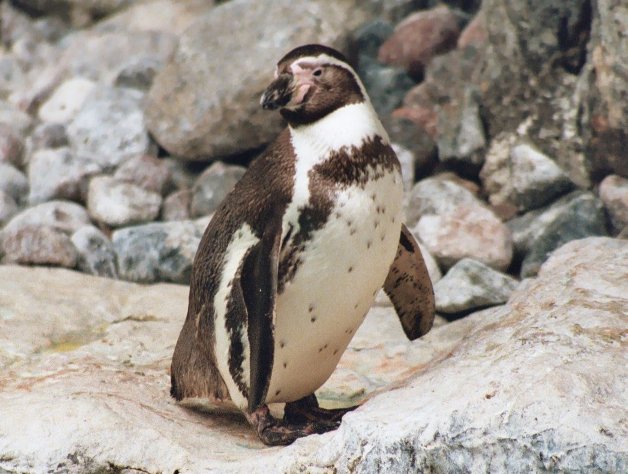

Spheniscus humboldti
This warm weather penguin lives mostly on rocky mainland shores, especially near cliffs, or on islands off the coasts of Chile and Peru.
Using their strong wings as flippers, Humboldts “fly” underwater, usually just below the surface, at speeds of up to 20 miles per hour, taking small fish and krill and eating them whole.
Humboldt penguins are social animals, living in relatively large colonies of closely spaced burrows where communication becomes quite important. Mated penguins are able to recognize one another and their offspring through a combination of sight and voice. Colonies are beneficial because they provide collective defense against predators such as skuas and gulls. Adults show high pair fidelity, with most pair-bonds remaining unless one partner dies. Egg-laying can occur at any time of year. When the chicks hatch, they are fed on a daily basis, with adults leaving the colony in early morning, and returning with food later the same day.
The above picture was taken at the Chicago Brookfield zoo, in August 2004.
Genus Spheniscus
Family Spheniscidae
Order Sphenisciformes
Class Aves
Subphylum Vertebrata
Phylum Chordata
Kingdom Animalia
Life on Earth
Index